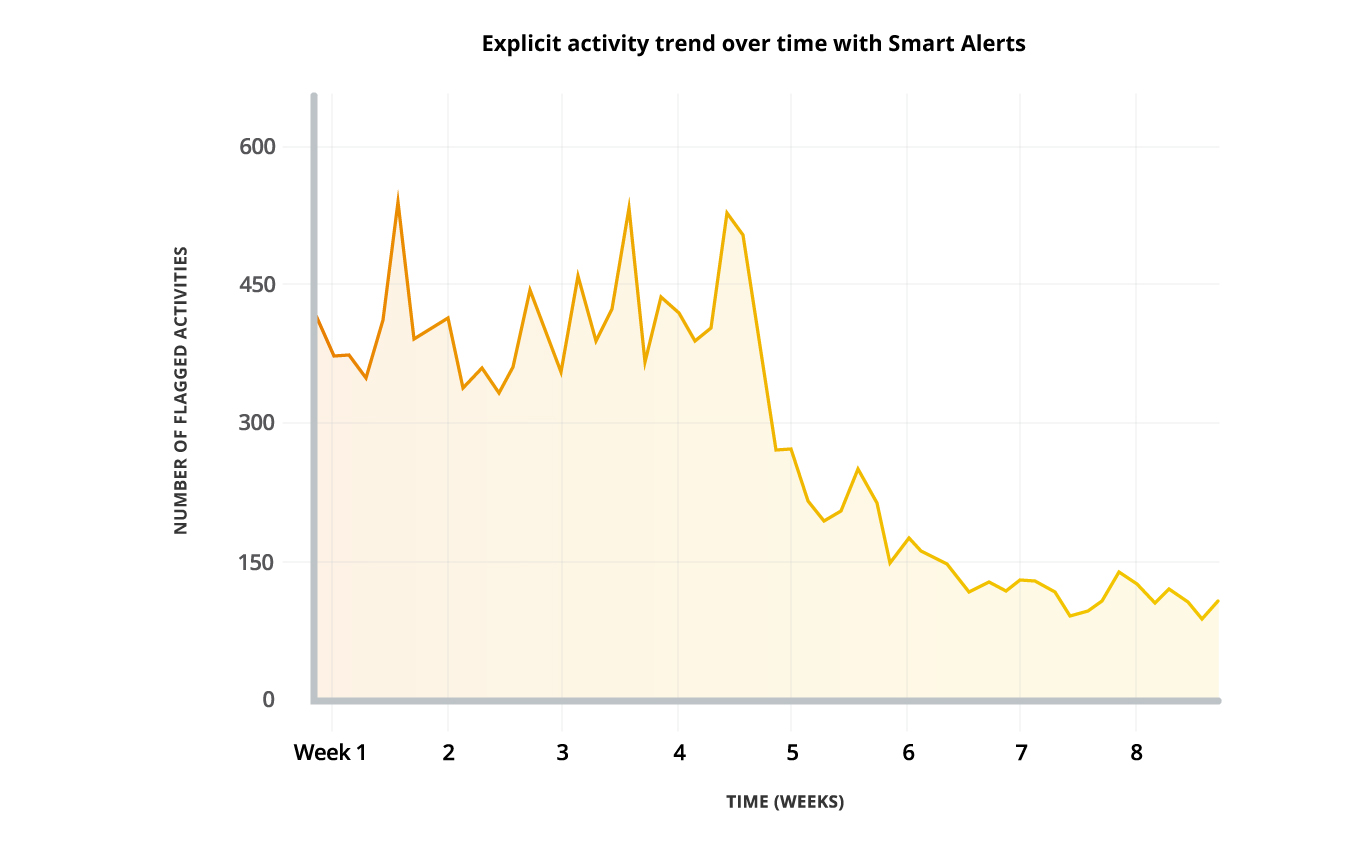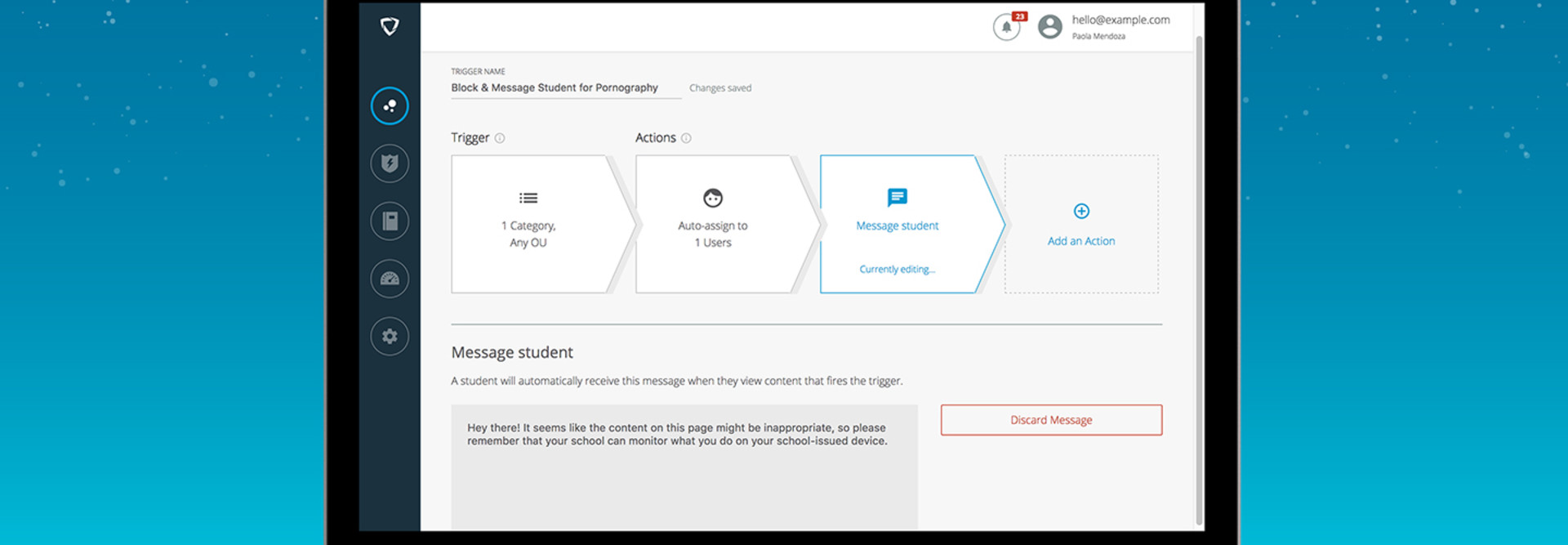New Tool from GoGuardian Uses AI to Boost Efficiency and Protect Students
Artificial intelligence in K–12 education has huge potential, and GoGuardian is yet another example of an ed tech company leading the way in bringing AI to the classroom.
Its new Admin 2.0 tool, which was unveiled at ISTE’s 2017 conference, uses elements of artificial intelligence to not only make content filtering more efficient for administrators but also ultimately protect students online and offline.
Tyler Shaddix, GoGuardian’s head of innovation, says that the company designed Admin 2.0’s AI capabilities were imagined after administrators reported how frustratingly inaccurate flagged activity could be.
“One good example we had was a dramatic increase of flagged activity during prom season,” says Shaddix. “Girls were looking at prom dresses online, and so many of the dresses had ‘sexy’ in the description that admins were just getting overloaded with data.”
To combat this overload of often irrelevant data, Shaddix says Admin 2.0 now has Smart Alerts powered by AI that analyzes the web pages students visit. The implications for this tool for administrators, counselors and students are huge.
SIGN UP: Get more news from the EdTech newsletter in your inbox every two weeks!
Smart Alerts Give Admins More Information Efficiently
As more schools are creating one-to-one tech initiatives with tools like Chromebooks, the need for a content-filtering tool is immense, especially when students bring the devices home.
Wichita Falls Independent School District CTO Shad McGaha calls GoGuardian’s suite of management tools “a game changer.” However, using the traditional content-filtering tool can be quite inefficient for a large district. Shaddix says one school district of 20,000 students using a simple filtering solution reported 200,000 flagged content notifications per week.
Previously, the process of dealing with a flagged content notice meant that an administrator needed to go to the flagged website, then try to determine what the student was doing on the site and whether the behavior required discipline or indicated cyberbullying or risk for self-harm.
“I had one admin tell me that he spends 30 minutes per flag,” says Shaddix. “That’s crazy and super-limiting if it’s on a site like Facebook or Twitter that you can’t see unless you are logged in.”
With Admin 2.0, not only can admins see exactly what students see — the AI takes screenshots of flagged content and what the student was doing ten minutes before and after —the flags are much more accurate, too. Shaddix reports that the large district with 200,000 flags now receives only 2,000 per week.
After running a pilot with 70,000 students and their districts, GoGuardian shaped the AI’s accuracy using admin feedback — something the company continues to do.
“It’s really important to the user interface that educators are giving us feedback about whether a filter was correct or incorrect,” says Shaddix. “We’re actually able to rebuild the models for the AI based on that feedback.”
AI-Powered Content Filtering Can Boost Digital Citizenship and Protect Students
A huge part of education today is making sure that students know how to be good digital citizens.
“We believe digital learning and teaching go hand in hand with digital citizenship. To have a successful learning environment, you need digital citizenship … ,” says Kelly Mendoza, senior director of learning and engagement for Common Sense Education, in an EdTech article.
Part of molding students into good digital citizens is making sure they comply with safe searching regulations at school. GoGuardian’s content filtering stops students from accessing inappropriate content, but Admin 2.0 takes it a step further. Because the AI is constantly assessing website content, administrators don’t need to maintain frequently updated URL lists. Also, they can set up personalized messages to students trying to access these pages.
Recent research indicates that a personalized approach to discipline works the best, and Shaddix says Admin 2.0 is continuing to prove this. He says students who received a “you know better” type of message were less likely to try again to access that type of website than students who just got a blocked page.

In addition to these automatic messages, administrators can set up automatic alerts in Admin 2.0 that will immediately contact a counselor if a student’s behavior online seems to indicate that he or she is considering self-harm.
According to Shaddix, administrators at one school intervened in 61 incidents where students were considering self-harm. Because of the potential impact of these alerts, Shaddix says that GoGuardian is partnering with suicide prevention groups to provide content and guidance to districts.
“GoGuardian’s entire mission is about making sure each student’s potential is fully realized,” he says. “Obviously, if they hurt themselves, that potential isn’t going to even be close to being realized.”









